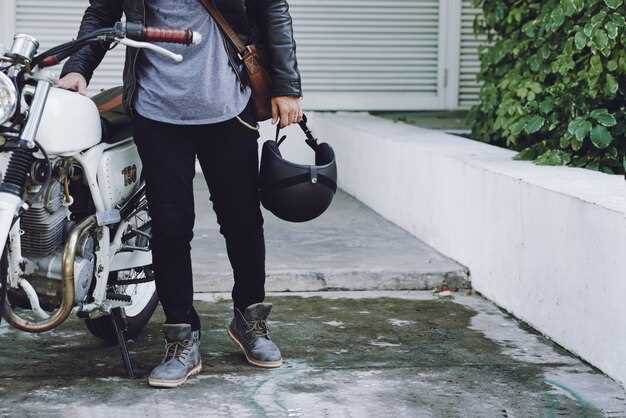
Proper maintenance of your riding gear is essential not only for longevity but also for ensuring your safety on the road. The harsh conditions that riders often face can take a toll on their equipment, making regular cleaning and care crucial. Whether you are a seasoned biker or a novice, understanding the importance of maintaining your gear can help you enjoy a safer and more comfortable ride.
Your riding gear is an investment that requires attention. Regular cleaning and inspections can help identify wear and tear before they become serious issues. From helmets to jackets, every piece plays a vital role in protecting you during your rides. Neglecting proper care may compromise the integrity of these items, increasing the risk of accidents.
In this article, we will explore best practices for keeping your riding gear in optimal condition. By incorporating consistent cleaning routines and understanding the specific needs of different materials, you can extend the lifespan of your gear. Prioritizing these maintenance habits will not only enhance the performance of your equipment but also provide peace of mind as you hit the open road.
Proper Cleaning Techniques for Different Gear Materials
Maintaining your riding gear is essential for both longevity and safety. Different materials require specific cleaning techniques to ensure they remain in optimal condition. Here’s a guide on how to care for various gear materials.
Leather gear is durable but needs special attention. Use a soft brush to remove dirt and dust. For deeper cleaning, use a damp cloth with a mild soap solution. Avoid soaking the leather; instead, wipe gently and then dry with a clean cloth. After cleaning, apply a leather conditioner to keep the material supple and protect it from cracking.
Textile gear, often used for jackets and pants, is usually machine washable. Check the manufacturer’s label for specific instructions. To care for these items, close all zippers and Velcro before washing. Use a gentle cycle with cold water and a mild detergent designed for synthetic fabrics. Hang to air dry instead of using a dryer, as high heat can damage the material.
Mesh gear provides breathability, making it essential for warm weather. Clean mesh items by rinsing with cold water to remove surface dust. If stained, use a soft brush with mild soap. Avoid harsh chemicals, as they can break down the fibers. After washing, allow the gear to air dry completely to prevent mildew.
Many riding gear includes plastic components, such as helmets and armor. Clean these parts using a damp cloth with mild soap. For more stubborn grime, a soft brush can be used. Rinse thoroughly to ensure no soap residue remains. Ensure these parts dry completely before storing to prevent moisture buildup.
Care for riding gloves by using a soft brush to remove dirt. If necessary, wash them in warm water with a mild detergent. Avoid soaking and use a gentle cycle if machine washing is allowed. After cleaning, reshape the gloves and air dry away from direct sunlight to maintain their form and prevent material deterioration.
By using the appropriate cleaning techniques for each material, you can ensure your riding gear remains effective and safe over time. Regular maintenance not only extends the lifespan of your gear but also enhances your riding experience.
Storage Solutions to Prevent Damage and Degradation

Proper storage of your riding gear is essential for maintaining its longevity and ensuring your safety. Begin by selecting a cool, dry place away from direct sunlight, as UV rays can weaken materials over time. Utilize breathable garment bags specifically designed for textile gear to shield it from dust and moisture.
For items like helmets and gloves, consider using dedicated shelves or racks that provide ample ventilation. Storing these items in airtight containers can lead to unpleasant odors and deterioration, so ensure your gear remains exposed to air while protected from external elements.
Organize your gear systematically, using hooks or bins for helmets, jackets, and boots. This will minimize the risk of scratches and scuffs. Make sure to clean your gear before storage; dirt, sweat, and grime can accelerate degradation if left untreated. Use mild soap and water, and let everything dry completely.
Finally, periodically check on your stored gear to catch any signs of deterioration early. Regular care ensures your equipment remains in optimal condition, ready for your next ride.
Routine Inspections and Repairs for Optimal Performance

Regular inspections of your riding gear are essential for ensuring its longevity and safety. Begin with a thorough visual examination of each component, including seams, zippers, and fasteners. Look for signs of wear, such as fraying fabric or cracked helmet shells, which could compromise protection. It’s crucial to address any visible damage immediately to avoid further deterioration.
Next, focus on the functionality of your gear. Check the zippers to ensure they glide smoothly and close securely. Inspect straps, buckles, and closures for any signs of wear, as these elements are vital for keeping gear securely in place. Any malfunction in these parts can affect your safety while riding.
Cleaning your gear is another critical aspect of maintenance. Accumulated dirt, grime, and sweat can damage materials over time. Follow manufacturer instructions for cleaning specific items, whether it involves hand washing, machine washing, or using specialized cleaners. Ensuring your gear is clean not only preserves its condition but also maintains hygiene.
When performing routine maintenance, consider any necessary repairs. If you identify minor issues during inspections, such as loose threads or small tears, take action promptly. Use suitable repair kits designed for your gear or seek assistance from professionals if the damage is beyond your capability. Timely repairs can prevent more significant problems down the line.
Lastly, keep an organized maintenance schedule. Set reminders to inspect your gear at regular intervals, ideally seasonally or before long rides. Consistent care will enhance the performance of your riding gear, ensuring it remains effective in protecting you while providing comfort during your rides.












